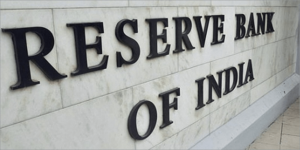
In 2019, a gripping movie titled The Laundromat, starring Meryl Streep, took the audience on a journey into the depths of money laundering and its far-reaching consequences.
The movie highlights the intricate web of offshore accounts and shell companies used to launder illicit funds. Its inspiration was the Panama Papers scandal, a leak of over 11 million documents, which unravelled an intricate web of corruption, tax evasion, fraud, and money laundering schemes employed by the global elite in various international tax havens. Individuals, business entities, and legal and accounting firms from 200 nations were involved in the scandal!
The film provides a satirical perspective of the dark underbelly of money laundering, but it uses real characters who were at the centre of the operation. As the credits rolled, one was left wondering about the ways to prevent such activities.
While there is no simple answer, eKYC (Electronic Know Your Customer) and vKYC (Video Know Your Customer) solutions can play an important role in combating money laundering and bolstering compliance.
The KYC process entails collecting essential identity information, including name, address, and government-issued identification, from each customer, and validating the details using diverse methods. Traditionally, this identity verification process relied on manual procedures that had several loopholes.
However, with technological advancements, banks and financial institutions have embraced digital approaches, such as eKYC and vKYC, to expedite and streamline the KYC process, making it more foolproof, time-effective, and efficient.
Let us explore in detail how these powerful solutions prevent money laundering and elevate compliance.
Unmasking money laundering with eKYC solutions
In India, eKYC refers to a digital method of verifying the identity of customers by leveraging Aadhaar, a biometric-based unique identification number issued by the Indian government. Through this system, the need for physical paperwork is eliminated, and the identity verification process becomes more seamless and efficient for banks and financial institutions. It reduces the inconvenience caused to customers significantly because they no longer need to physically visit bank branches.
The power of digital identity verification
Let’s consider Individual A, who has nefarious intentions, believes that the electronic submission of identification documents makes it easier to deceive the system, and attempts to open a bank account under a false identity.
Unbeknownst to Individual A, the eKYC solution he encounters is fully equipped to detect fake identities. When he submits his identification documents electronically, the system springs into action.
Utilising artificial intelligence (AI) and machine learning (ML) capabilities, it meticulously analyses the documents, cross-referencing them with existing databases to uncover any inconsistencies. It identifies irregularities that point towards his attempt to manipulate the system, such as forged documents, false information, and fake/photoshopped photographs.
The system’s advanced technologies and thorough analysis reveal the discrepancies and expose the attempt to use a fake identity to open a bank account. Individual A’s efforts to exploit the eKYC system are thwarted, and he is denied the opportunity to engage in illicit activities using this particular bank.
This is a simple example of the power of eKYC solutions in safeguarding the financial ecosystem. By leveraging identity verification technologies to detect inconsistencies, these solutions act as a deterrent, preventing the creation of bank accounts with fake identities for money laundering or perpetrating fraud. The automation and accuracy offered by eKYC significantly enhance the integrity of the banking system and protect the interests of legitimate customers.
Enhanced due diligence and risk assessment
Now let’s meet Individual B, a sophisticated money launderer, hoping to evade detection. Unfortunately for him, the eKYC system of the bank flags his account during the initial risk assessment phase. It identifies several risk factors associated with his account, such as his transactions in high-risk jurisdictions, frequent large transactions, and connections to known money laundering networks.
The red flags raised by the eKYC system trigger enhanced due diligence measures within the financial institution. Compliance officers delve deeper into the individual’s background, conducting additional research, and verifying the legitimacy of his funds and transactions. Thus, by leveraging the capabilities of eKYC, the bank effectively prevents Individual B from exploiting the system and ensures its own compliance with anti-money laundering (AML) and KYC regulations.
Clearly, money laundering thrives on exploiting vulnerabilities within financial institutions, and KYC checks are the first step line of defence. eKYC solutions can identify high-risk individuals or entities, detect suspicious activities, and take appropriate actions to protect the integrity of the financial system.
Advanced data analytics and monitoring for fraud detection
Individual C is a clever money launderer who attempts to fly under the radar by executing a series of intricate transactions between seemingly unconnected entities. He strategically involves multiple customers in different geographies with no apparent connection, aiming to obscure the trail of illicit funds.
But when banks have robust eKYC and early warning signal systems, his activities cannot remain inconspicuous because the fraud detection systems of banks harness the power of advanced data analytics to identify hidden connections and transaction patterns.
By analysing vast amounts of data, these systems can detect anomalies, identify unusual transaction flows, and spot covert connections between counterparties that might otherwise go unnoticed. These transactions can then be red-flagged and investigated further. By proactively identifying and investigating suspicious players and activities, banks can prevent money laundering transactions.
Preventing identity theft using video KYC solutions
vKYC involves a video call between the customer and a bank representative, wherein the customer’s identity is verified in real-time through biometric checks such as facial recognition along with geo-tagging and liveness checks.
While eKYC solutions are highly efficient in document verification, vKYC solutions take customer onboarding and verification to the next level by digitally facilitating real-time face-to-face interactions. These solutions allow financial institutions to conduct KYC processes remotely through live video calls with customers.

Real-time, face-to-face digital interaction to detect synthetic identities
In our last scenario, Individual D is a crafty individual attempting to exploit the loopholes in traditional KYC processes by creating a fabricated identity using doctored photographs, masks, and fake fingerprints. However, the introduction of vKYC solutions by a diligent financial institution raises the bar for customer identity verification.
When Individual D applies for an account, she is directed to participate in a live video KYC call with a trained professional. Not only is she requested to present her identification documents to validate her identity but she also undergoes ‘liveness checks’.
These are a set of techniques that are used by professionals to ensure that the video KYC system is reading an actual biometric source—a real eye, fingerprint or human face, rather than a false or spoofed image.
In ‘active liveness checking’, the person whose identity is being verified may be asked to perform specific actions such as head motions, blinking eyes, or smiling.
‘Passive liveness checking’ is a new and innovative technique, driven by AI, which checks whether a face that is presented to a KYC system is live. The system’s algorithms work in the background to assess images to detect if masks or cutouts are being used to provide a fake representation of the person whose identity is being verified.
Passive liveness checking systems analyse textures, skin, borders, and several other variables of video images on the fly to detect fake identities. In this check, individuals do not know if their liveness is being checked.
By combining technology and human judgement in vKYC, the bank answers the question, “Is this a live person?” in addition to answering the simpler question, “Is this the right person?” This protects it from fraudsters like Individual D who use synthetic identities and helps prevent biometric spoofing attacks.
KYC for compliance
According to the Financial Times, globally, credit and financial institutions paid almost $5 billion in 2022 for non-compliance with AML regulations, including lacunae in their KYC systems. With the increase in financial crime, governments are more serious than ever in combating money laundering, illegal activity funding, and terrorism financing.
Global organisations such as the Financial Action Task Force, Financial Crimes Enforcement Network, Office of Foreign Assets Control, and International Organization of Securities Commissions, as well as the European Union and major governments of the world, set AML and KYC regulations to prevent money laundering and other financial crimes.
Financial institutions must comply with these regulations by conducting customer due diligence and enhanced due diligence for politically exposed persons, implementing AML policies and internal controls, undertaking continuous monitoring, and reporting suspicious activities.
In India too, the Reserve Bank of India (RBI), the Securities and Exchange Board of India, and the Insurance Regulatory and Development Authority of India have issued detailed KYC norms for banks and financial institutions, financial intermediaries and investors, and certain categories of insurers, respectively. In fact, the RBI has imposed fines on public sector, private sector and MNC banks for not complying with the RBI KYC Directions, 2016.
In 2022, PwC reported that, globally, banks spend 3% of their operational cost base on undertaking KYC. While this is a sizeable amount, the penalty for inadequate KYC processes is significantly greater, including loss of reputation and trust. Therefore, the need of the hour is to implement eKYC and vKYC solutions that leverage technology.
With embedded application program interfaces (APIs), these solutions can retrieve and cross-reference company information from government registries, regulatory, and other statutory data sources in a short time frame and flag any inconsistencies. This cuts down costs, reduces the scope of human error, and enables seamless compliance reporting.
As we watch The Laundromat, we begin to identify with the deep despair that Meryl Streep’s character faces in being unable to hold any person or entity responsible for her plight.
<figure class="image embed" contenteditable="false" data-id="520558" data-url="https://images.yourstory.com/cs/2/c5c652a0fb5a11eca125d7821ea2fbc4/shutterstock15168642592000-1689064983721.jpg" data-alt="meryl streep" data-caption="
Meryl Streep walks the red carpet ahead of the screening of The Laundromat, during the 76th Venice Film Festival in 2019, at Venice, Italy. The Laundromat highlights the intricate web of money laundering and its far-reaching consequences. Image credit: Shutterstock
” align=”center”> Meryl Streep walks the red carpet ahead of the screening of The Laundromat, during the 76th Venice Film Festival in 2019, at Venice, Italy. The Laundromat highlights the intricate web of money laundering and its far-reaching consequences. Image credit: Shutterstock

The easiest step to stop the massive webs of lies and deception being spun to hide away illicit money is to fortify the first line of defence—onboarding, of which KYC is an integral part. By embracing the power of technology and enhancing their KYC processes through eKYC and vKYC, banks and financial institutions can protect themselves and their customers from financial crimes, fostering a future where transparency, trust, and compliance prevail.
As entertaining as The Laundromat was, the world doesn’t need a sequel based on newer real-life events.
(The author is Co-founder & Chief Executive Officer, Rubix Data Sciences.)
Edited by Swetha Kannan
(Disclaimer: The views and opinions expressed in this article are those of the author and do not necessarily reflect the views of YourStory.)








![Read more about the article [Funding roundup] Kula, Madbow, and Settlrs raise pre-Series A rounds](https://blog.digitalsevaa.com/wp-content/uploads/2022/01/Photo-Kula-1642672715101-300x150.png)

